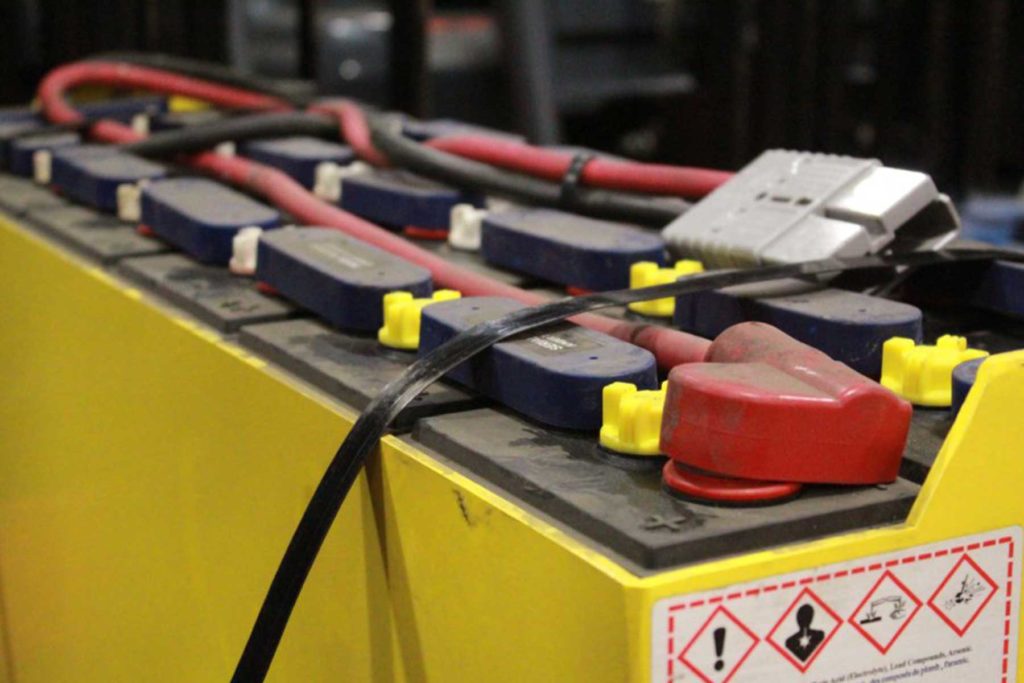If you are looking to winterize your forklifts, here are the areas you need to focus on:
1. Engine and Hydraulics
Moving components can slow down or jam completely in the cold winter conditions, which is why you should ensure that they are properly greased. When it is cold, engines and hydraulic systems need a longer warm-up time.
Prior to initiating any task, allow several minutes for the forklift to idle without any load. It will allow for the free circulation of oil through the system. You should also skim through and check each hydraulic utility. Cold ignitions are likely to cost you extra money due to higher fuel consumption and a greater level of wear and tear on parts.
Whenever possible, avoid a running duration of less than 30 minutes. During the first 30 minutes of ignition, engines typically use a denser fuel composition. That’s when water vapor usually accumulates in the oil and exhaust since temperatures are too low for evaporation to occur.
To ensure that crystallizing, clouding, or ice formation does not occur in hydraulic fluid, make sure that you only use winterized lubricants/fluids. Additives or winterized fuel are also important for diesel engines to prevent coagulation.
2. Battery
Cold temperatures usually put a lot of pressure on power and cause batteries to discharge at a faster pace. Preemptive care, however, can save you a lot of money and worry.

Check the cables to ensure that they are clean, and use a load tester to check that the battery is at maximum strength/charge. If you have hired a forklift from a rental company, be sure to confirm the battery performance of the equipment.
3. Cooling System
To check that the coolant is in good condition and that the antifreeze level is satisfactory, you should use a hydrometer. Examine hoses and other related parts for any signs of damage.
4. Lights
Forklift lights should be clean and functional because of the low levels of viability and darker afternoons with winter approaching. Many forklifts are still using halogen lights, but swapping them out for LED bulbs is important. LED bulbs are not only longer-lasting and brighter, but they are better when it comes to absorbing operational vibrations and brighten much better in cold temperatures.
5. Tires
Air-filled forklift tires should be examined for adequate air pressure. Furthermore, all tire types (solid included) have to be checked to ensure that the tramp depth is capable of handling cold and snow conditions.
Forklift tires can also be fitted with snow chains to provide extra grip on slippery surfaces. High-traffic areas where the forklift operates should also be kept free of potential dangers or any other obstacles.
Snow, ice, and frozen mud are all likely to hamper the forklift’s safety and that of the operator, which is why a higher grip is required for outdoor areas, and they should be gritted or snow plowed regularly. You can also get specialized forklift parts that can help you shovel snow and spread grit.
6. Cabs
For a forklift with an inbuilt cab, it is important to ensure that the heater functions properly, all windshield wipers move freely, and are capable of handling the extra demands of cold weather and that all door fasteners are properly lubricated.
Forklift shields are also accessible for any machines that don’t have bounded cabs. However, avoid using vinyl wraps since they are brittle and reedy. On the other hand, corrugated plastic covers tend to be better at diverting the rain away from the windshield and more durable.
7. Operators
Operating a piece of equipment doesn’t just involve the machinery; there’s also a human element to it. The operator should be adequately equipped for extreme temperatures with the proper attire such as high visibility vests, warm clothes, gloves, and hats.
Drivers should keep speed under control and remember not to ignore the risks posed by challenging weather conditions. Our bodies require more energy to work during winter, and our energy reserves are depleted faster, making tiredness an underrated peril. Operators should take breaks to rest and replenish calories.
8. General Inspection/Servicing
Besides the points mentioned above, one obvious but sometimes overlooked area is ensuring that your forklift undergoes all regular inspections and scheduled servicing by a reputable provider such as CIF Transmissions.
Scheduled maintenance is important because winter is usually ruthless to starters and chokes. A quick overall tune-up of electrics and mechanics is thus always an excellent idea. Routine checks must reiterate that all equipment is safe and operational before the start of each daily shift.
Forklift dealers often recommend regular checks, and you can find this in the operator’s manual. Overall, hygiene isn’t an overstatement. The equipment needs to be cleaned after every operation. All wintertime debris needs to be removed. Grit, mud, ice, and snow can all build up easily and hamper functioning.

